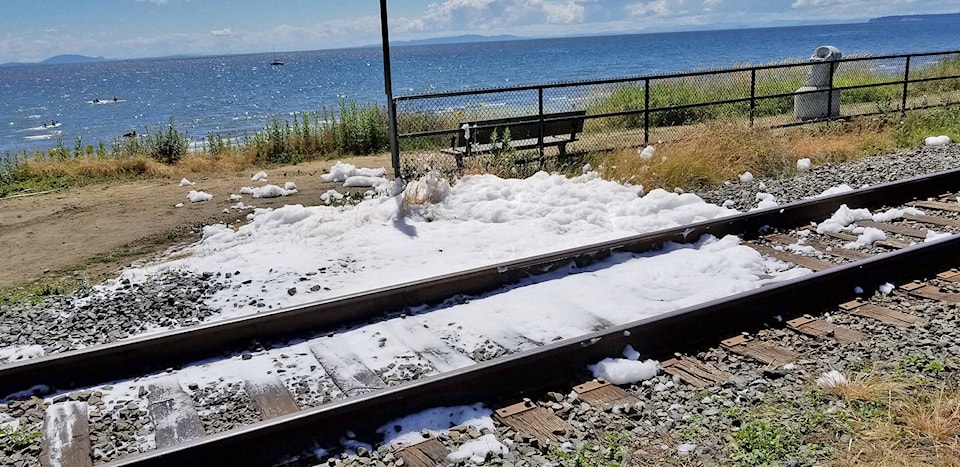Editor:
Re: Fire-retardant ‘snow’ on beach raises concern, July 11.
“You are trespassing, you are on private property.”
That was the rail worker’s response to my questions as a concerned citizen about what chemical substance they were openly spraying around children. The only other answer I received is that its not toxic if children do not play in it.
The chemical substance was then not cleaned up. No warning or cautionary signs of its nature were put up. As they drove away, a young girl with her parents stopped to scoop some up, wash her hands in and with it, then ran her hands through her hair. No fault of her parents; there were no signs, they must have assumed it was safe.
Like most of us, we are still living in the false delusion that this is our beach. The reality is, it is not. They were trespassing. We are all trespassers when we make our we to the ocean these days. This is the true reality, according to BNSF.
According to the workers, they own the land from the parking lots to the shore. This is why and how an American company can spray piles of chemical substances on Canadian soil, then not bother to clean it up or be obligated to post signs on a busy day when kids are running around trespassing.
As American entity, perhaps they abide by different laws. We still at this time have no disclosure about the substance or WHIMIS sheets about it, as would be required for every Canadian business.
They also spray pesticides all over the blackberries – berries that the trespasser people eat and have no idea of the level of toxin they are consuming, as there are also no signs. The chemicals the train sprays is no concern to trespassers, as we now know.
We have indeed lost our beach.
When we were children, the train would come by maybe once or twice a day and was not very long. Now, there are steel fences and the train is moving all day long. Different conductors will blow the horn differently, sometimes at 3 a.m. or 5 a.m. for upwards of 10 seconds – sometimes where there are no crossings or people in sight. We can be awoken by it as far away as city hall on top of the hill.
The dust from the coal is a different issue. And there are other issues with the trains, which are heavier and longer than ever before, causing cracks into the hill from a geotechnical perspective. Our small community was never designed to be a commercial transport path for large heavy trains.
We used to be a beach community; now we are a train community.
The reality is we have lost our beach. When will we reclaim our community and reroute the train?
Martin Friesen, White Rock
